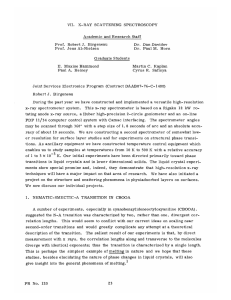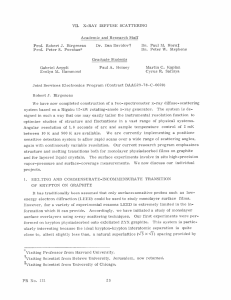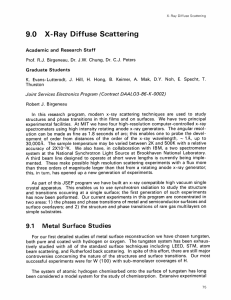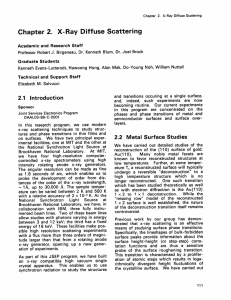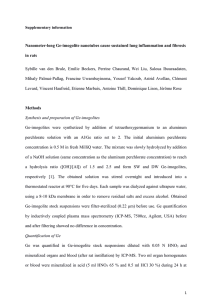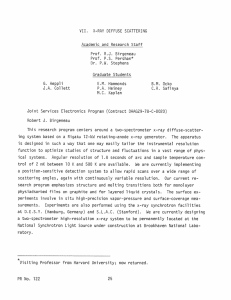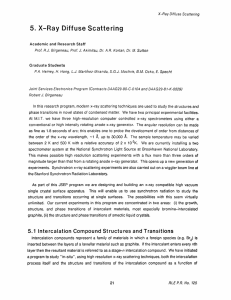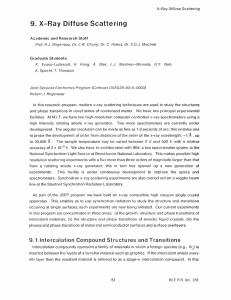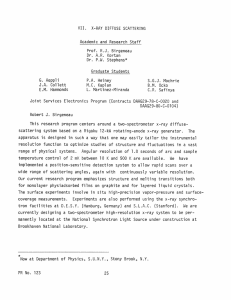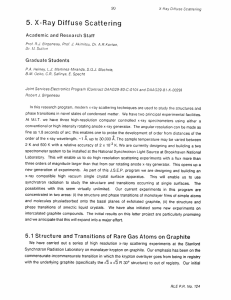VI. X-RAY SCATTERING SPECTROSCOPY Academic Research Staff
advertisement
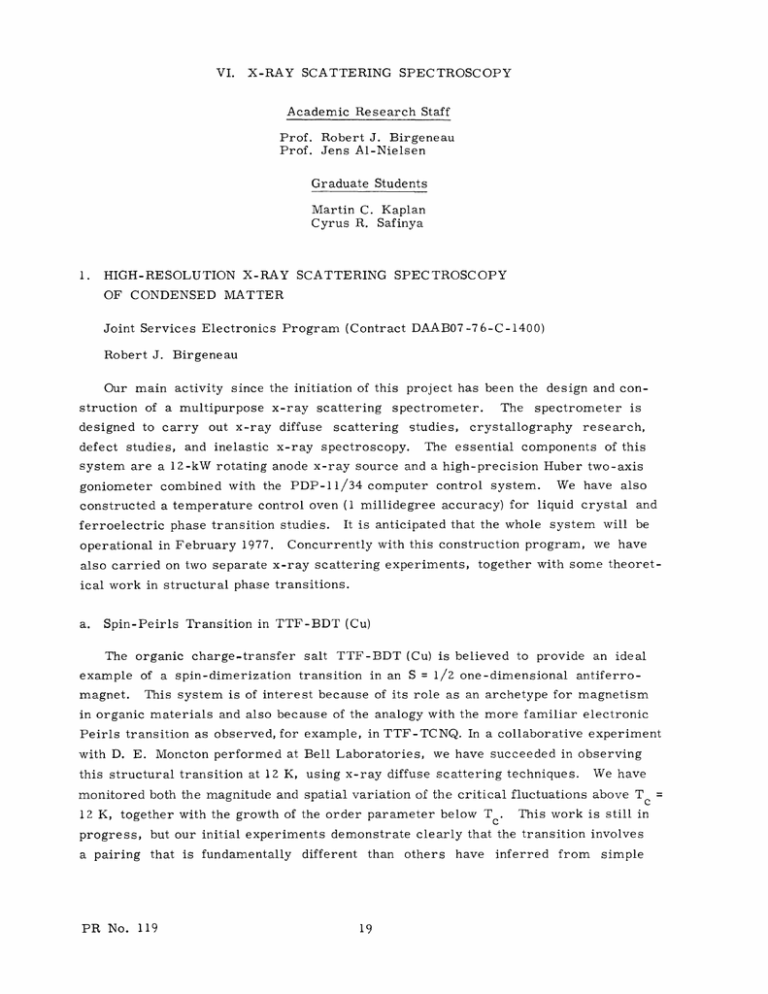
VI. X-RAY SCATTERING SPECTROSCOPY Academic Research Staff Prof. Robert J. Birgeneau Prof. Jens Al-Nielsen Graduate Students Martin C. Kaplan Cyrus R. Safinya 1. HIGH-RESOLUTION X-RAY SCATTERING SPECTROSCOPY OF CONDENSED MATTER Joint Services Electronics Program (Contract DAABO7-76-C-1400) Robert J. Birgeneau Our main activity since the initiation of this project has been the design and construction of a multipurpose x-ray scattering designed to carry defect studies, out x-ray diffuse spectrometer. scattering studies, and inelastic x-ray spectroscopy. The spectrometer is crystallography research, The essential components of this system are a 12-kW rotating anode x-ray source and a high-precision Huber two-axis goniometer combined with the PDP-11/34 computer control system. We have also constructed a temperature control oven (1 millidegree accuracy) for liquid crystal and ferroelectric phase transition studies. operational in February 1977. It is anticipated that the whole system will be Concurrently with this construction program, we have also carried on two separate x-ray scattering experiments, together with some theoret- ical work in structural phase transitions. a. Spin-Peirls Transition in TTF-BDT (Cu) The organic charge-transfer salt TTF-BDT (Cu) is believed to provide an ideal example of a spin-dimerization transition in an S = 1/2 one-dimensional magnet. antiferro- This system is of interest because of its role as an archetype for magnetism in organic materials and also because of the analogy with the more familiar electronic Peirls transition as observed, for example, in TTF-TCNQ. In a collaborative experiment with D. E. Moncton performed at Bell Laboratories, we have succeeded in observing this structural transition at 12 K, using x-ray diffuse scattering techniques. We have monitored both the magnitude and spatial variation of the critical fluctuations above T c This work is still in 12 K, together with the growth of the order parameter below Tc. progress, but our initial experiments demonstrate clearly that the transition involves a pairing that is fundamentally PR No. 119 different than others have inferred from simple (VI. X-RAY SCATTERING SPECTROSCOPY) molecular stacking considerations. Consequently, the dominant exchange paths differ from those implied by a naive consideration of the TTF molecular orbitals. These results are a great surprise to us. There is very little microscopic informa- tion available for this class of materials; hence, these new data could have a significant impact on our understanding of the magnetism of one-dimensional organic chargetransfer salts. b. Electronic Excitations in Liquid Helium We have now completed an inelastic x-ray scattering study of the electronic excita- tions in liquid helium in collaboration with P. E. Eisenberger and W. Marra of Bell Laboratories. We find that the electron density response function S(q, c) can be understood quantitatively by using a simple hydrogenic atomic theory. No many-body or multielectron excitation effects are observed above a significance level of approximately 10%. This is in sharp contrast to the situation for simple metals like aluminum where many-body effects play a central role and theory is still able, at best, to provide a qualitative understanding. Thus this study in liquid helium supplies one physical system where theory and experiment for the electron density fluctuations are in accord. c. Mean Field Theory and the Ginzburg Criterion By applying a real-space version of the Ginzburg criterion, it is possible to assess the relative importance of critical fluctuations, and hence the probable limitations of mean field theory for a wide variety of phase transitions. For example, for ferroelec- trics and for certain soft acoustic phonon structural transitions the Ginzburg arguments predict that mean field theory should be valid for spatial dimensionalities greater than d* = 3 and d* = 2, respectively. These "marginal dimensionalities" follow directly from the geometry of the critical fluctuations in phase space. We have shown that this approach provides a simple technique for assessing the self-consistency of Landau theory in a vast range of physical systems. PR No. 119

